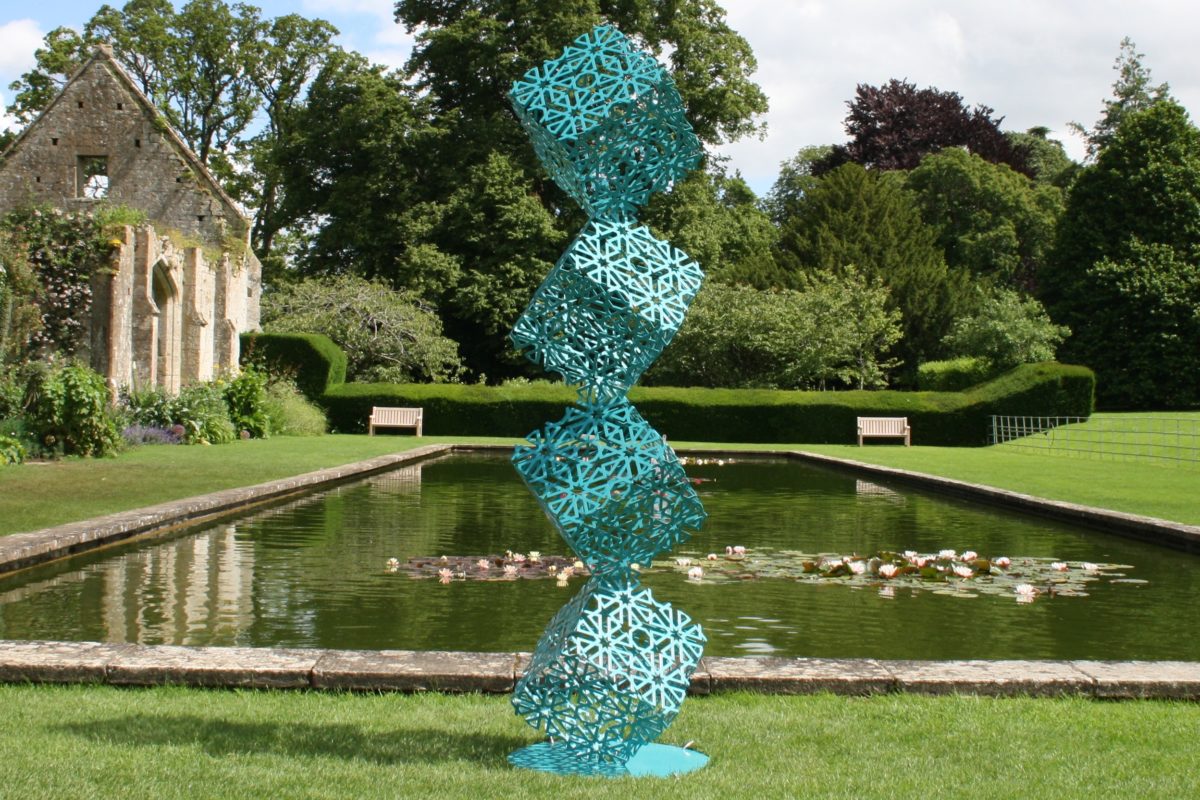Arabesque Colour Edition
Stainless steel, paint
2.4m height
Edition of 8
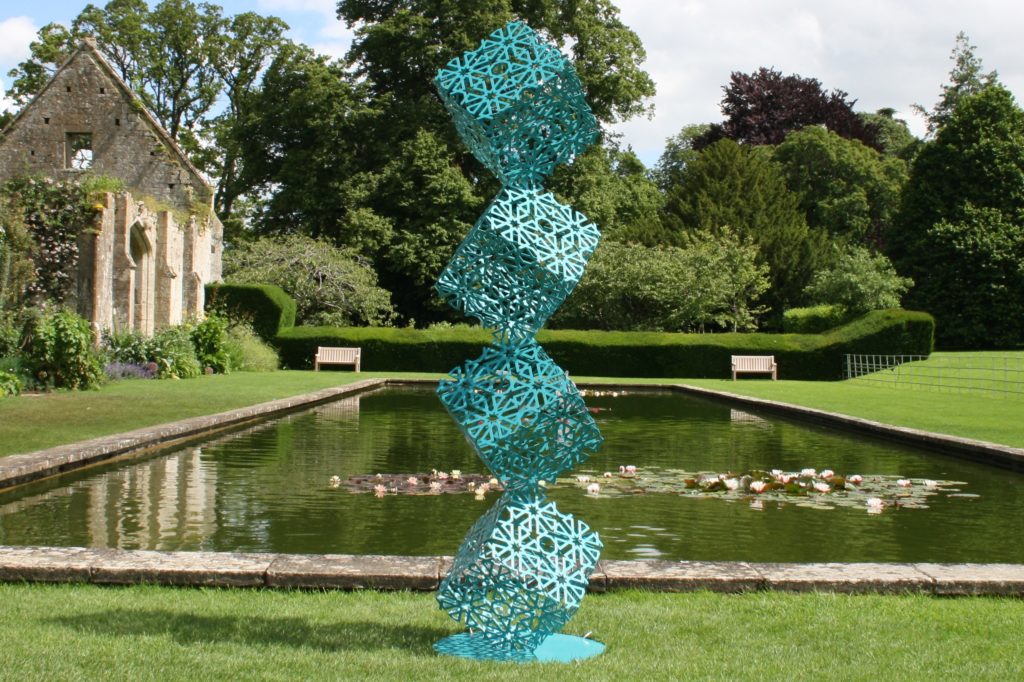
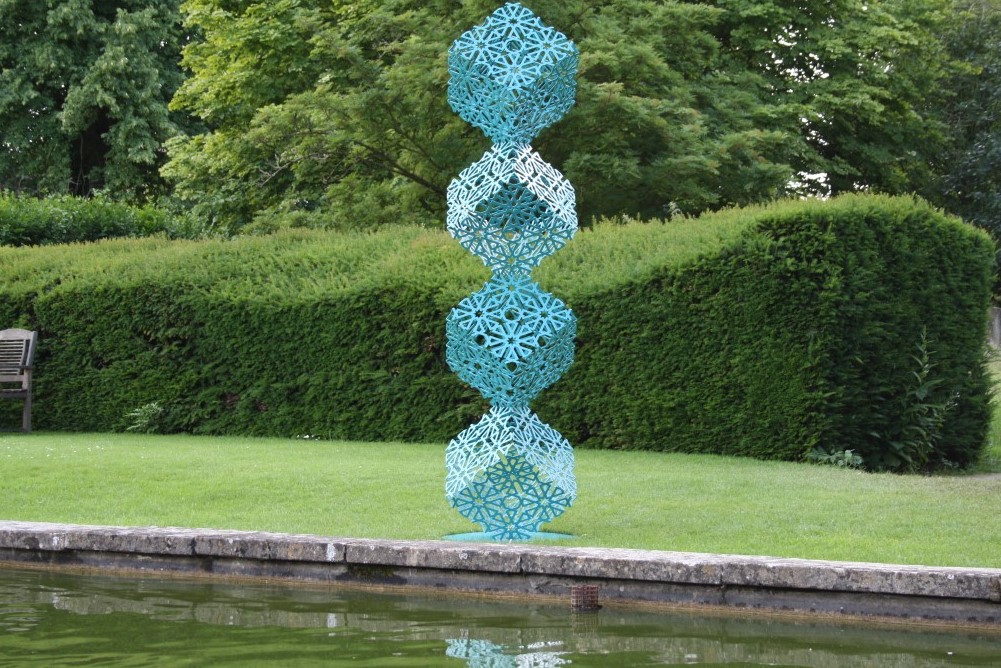
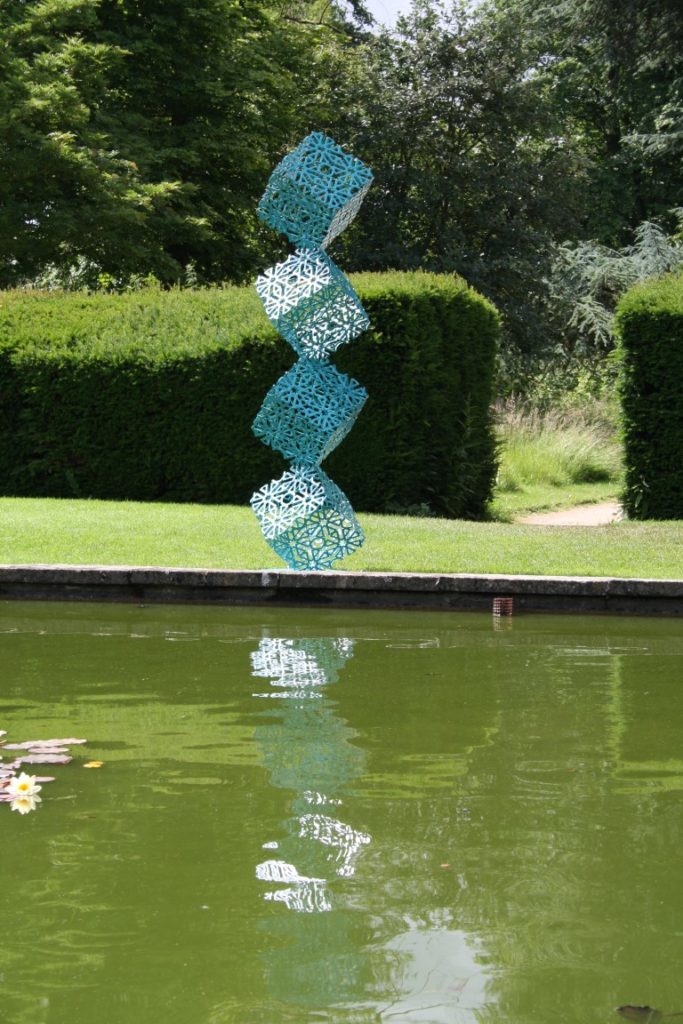
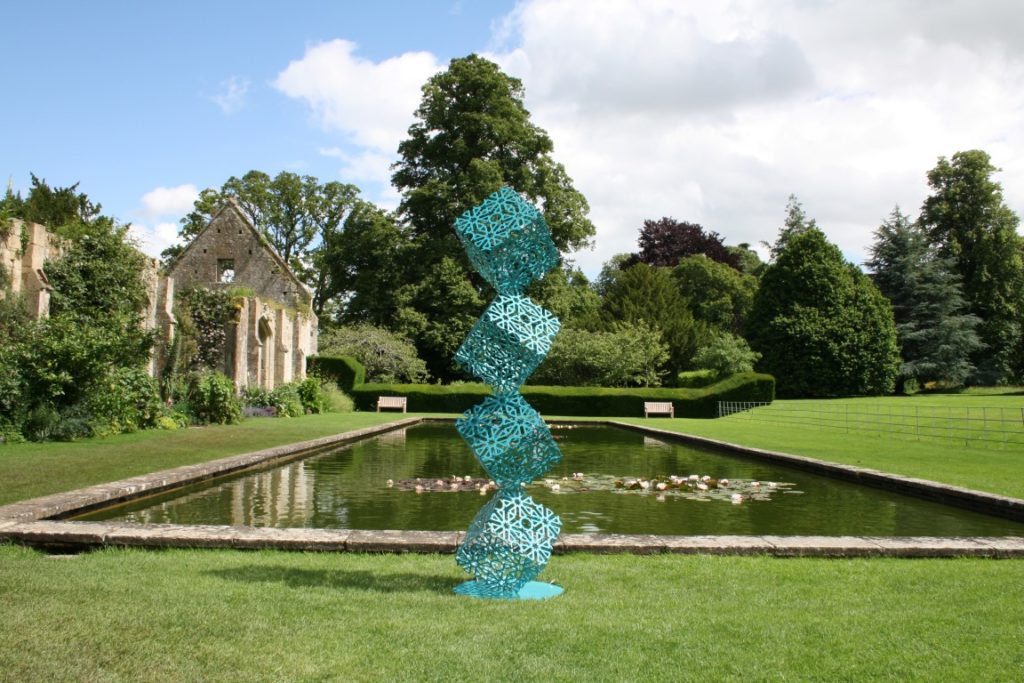
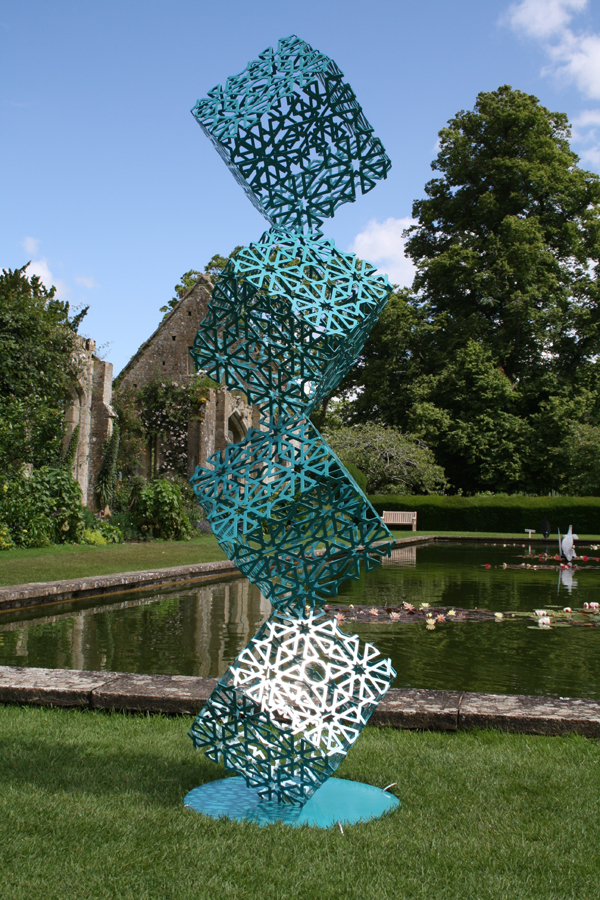
Arabesque
Available in turquoise blue and azure blue – two traditional colours found in traditional Islamic art and tile-work.
This sculpture reinterprets traditional Islamic geometric design in contemporary sculptural form. The geometric patterns in Islamic art were generally two dimensional (tiles, mosaics, engraving etc) or architectural. This work explores how these designs could be represented three dimensionally as a sculpture.
The pattern is taken from the Huand Hatun mosque in Kayseri, Turkey and would have originated approx in 1200AD. The geometric lattice as it is constructed of the repetition of the square motif and I have based the sculptural form on the cube repetition. Inspiration also came from The Bibi Khanum mosque, Samarkand, Uzbekistan which has a strong decorative feature of mosaic towering squares on the entrance wall.
The work is also intended to give a sense of balance and harmony, being delicate but strong, supporting and being supported – rising – celebrating spiritual aspiration.
Both turquoise and azure blue are widely used within Islamic art. In Iran cobalt and copper were abundant natural resources which had a significant role in their utilization for tiling, and over time, turquoise and azure have gained spiritual association.
Turquoise and azure were popular with the ancient Persians. They had a special interest in precious and rare stones, and gave them high value. This can be seen clearly in numerous examples over thousands of years. Undoubtedly, the reason for this interest is beautiful and
shining colors of these stones in nature that attract every viewer. Among these stones, turquoise and azure have been found more than others in Iranian plateau. That is why turquoise blue and azure blue have been named after these two stones.
The work can be illuminated at night with light fitting position. Click here for more information on Pete’s Islamic series.
